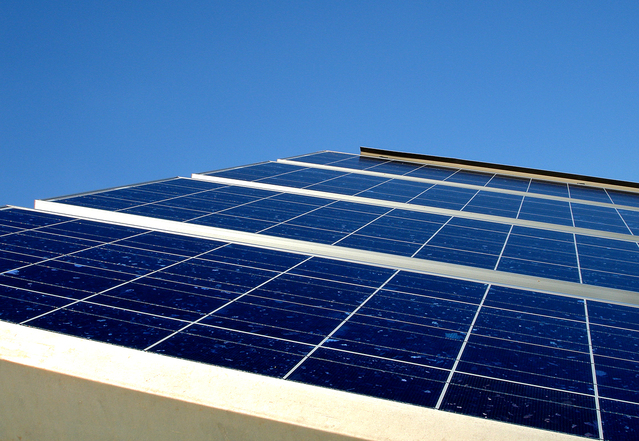The scorching pace of solar power – II
This is the second article in a five-part series. The others can be found at Part I: http://asiaconverge.com/2016/04/is-fear-of-bankruptcy-forcing-oil-rich-saudi-turn-to-solar-power-wait-for-25-april-html/ Part III: http://asiaconverge.com/2016/04/india-tremendous-advantage-solar-power-space-money/ Part IV: http://asiaconverge.com/2016/04/india-not-learn-germanys-hermann-scheer-solar-power-model/ Part V: http://asiaconverge.com/2016/04/you-snooze-you-lose-early-entrant-germany-scores-over-india-in-rooftop-solar-power-scheme-html/
The demand for solar power – across the world – is likely to be driven by several factors.
First comes the awareness of how the oil lobby had held the world to ransom by allowing oil prices to climb to over $100 a barrel. Almost every non-oil-producing-country now wants to derisk itself against the power of the oil cartel.
Second, it is a clean source of energy, abundantly available. Environmentalists love it.
Third, the US itself knows that allowing oil prices to slide would give it several benefits.
First, the shale gas producers are more widespread than the conventional oil barons of that country. That clutch was popularly known as the Texan lobby. It controlled politics, even investments in energy (remember Enron?). Its linkup with the Middle East made it even more powerful. Shale gas producers caused the price of gas, and thus of oil, and even coal, to crash. That reduced the Texan and the Middle East clout. More significantly, it weakened Russia, and Iran, both of which are enormously dependent on oil incomes. In terms of geopolitics, the US prefers a weaker role for oil. Not surprisingly, the US is also a major investor in solar power.
Fourth, and quite significantly, solar power is wresting a big role for itself because of falling prices. Remember how, just 15 years ago, the average cost of each MW of installed solar power was over $5. Thanks to Germany, the price fell to almost $1.5. As Bloomberg-Businessweek reported, just last week, First Solar Inc. has begun making solar panels at prices which are less than those of China’s biggest producer.
It has begun justifying its loan guarantees of more than $3 billion from the U.S. government. Today, First Solar is producing panels for as little as 40 cents a watt, or about 15% less than China’s Trina Solar Ltd. According to that publication, by 2019, First Solar’s module-cost could be as low as 25 cents a watt, according to analysts’ models. That could make solar power cheaper than even thermal electricity.
There is a fifth factor at work. And that is storage devices, or batteries. Solar power has one major problem. Like wind power, a constant flow of energy cannot be guaranteed. A cloud in the sky is enough to cause solar power supply level to plummet. That can make electricity grids extremely unstable. It can play havoc with industries heavily dependent on electricity. For energy-intensive chemical-process-industries, the absence of steady power could become a matter of survival or closure.
But batteries are expensive. And they account for almost 20-40% of the project cost for a solar power plant. Of course, this isn’t a problem for India’s solar power producers at the moment. Call it a hidden profit opportunity. They supply whatever power they produce to the grid. Since they account for barely a few percentages of total power produced, the wild swings in solar power generation are absorbed by the huge power transmission lines. The minor variations are smoothened out. But as the share of solar power increases, this could become a major problem.
But the good news flashed through this industry last year. Battery costs could tumble by as much as 75%. At least four companies – SEEO, Aquion, Tesla and Ambri – are on the verge of discovering new technologies for power storage that could crash prices to 25% of their current level.
That was a big shot in the arm for the solar industry. In fact, storage of power itself appears to be such an interesting business proposition, that IL&FS has just announced plans for setting up a power storage utility with a capacity of 5,000 MW. Investment details are not yet known. Such plans would cater to any energy source, which can guarantee stable power operations.
That is where India has a chance to become one of the lowest cost solar power.












































COMMENTS